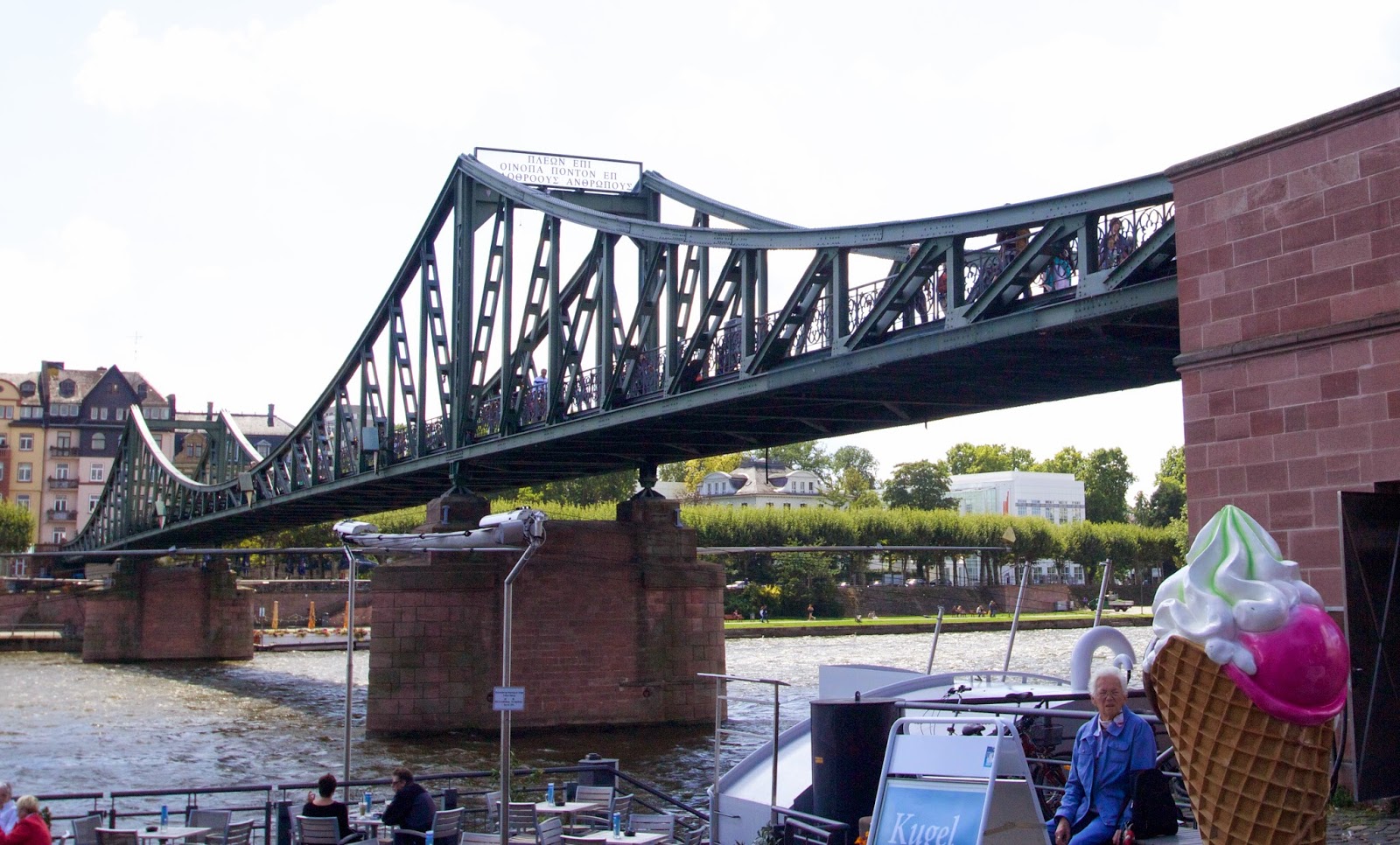At last I'm close to
landing on the sixth continent I’ve visited (and Australia seems ever so far
away, so maybe six is all I’ll ever do). Little things tell me that I’m actually
here. The moving map on the screen in front of me lets me know that I’m
in Africa. I believe it even though the
windows are still shaded. Not that I
could tell if I could look out.
 |
| Airplane Location Map |
The map has some familiar city names and a whole lot that are not.
Once I’m off the plane and
into the airport, there are a few more signs of where I am. Airports themselves often seem other-worldly,
but they seem to be the same sort of other-world whether in Europe, South
America, Africa, Asia, or North America. Of course one sign that I’m very
far from home is shown on the flight arrivals screen in the airport.
 |
| Flight Arrivals Screen |
There is only one origin
in the US (and only two in the western hemisphere) and it is, of course, New
York. And given that O.R. Tambo International Airport in Johannesburg is
a major international airport, many of the origin cities are capitals.
But the clear view, at least this morning, is of places not just north
(after all, Johannesburg is very far south in the Southern Hemisphere)
but either from Africa or north across the equator (Sao Paulo here being
the only exception).
During a pre-arranged car ride–
we have been cautioned against taking a taxi from the airport – we get a
further sense of being away from home in large part because we’re driving on
the left-hand side of the road. Our
first stop in southern Africa is the Melrose Place Guest House in the Melrose
neighborhood of Johannesburg, described by Wikipedia as “a developing up-market
suburb.”
 |
| Location of Melrose |
As you can see from the
map, we are due west of the airport – the purple blotch on the right hand side
of the map – and somewhat north of central Johannesburg. We are still further from Soweto, the
Southwest Township which is in the lower left of the map to the (not
surprisingly) southwest of Johannesburg.
So let’s talk a bit about
safety and security. I had heard that Johannesburg was not the safest
place in the world — but probably few places worth visiting are. Indeed the same can be said about places
where most of us live. I saw signs of this perception in terms of
security measures being taken and warnings about how to be aware and not do
things like take taxis from the airport. But I never once in Johannesburg,
or indeed in all of southern Africa, felt unsafe or worried about my physical
well-being, either from humans or four-legged critters. I don’t want to
downplay the veracity of the warnings. But we also need to appreciate the
tremendous economic exploitation of this country by the minority white
Apartheid government. They not only
deprived people of rights, freedom, and lives.
They created a horrific economic imbalance that will take decades to
remedy. But they are at least moving in
the right direction. (See the discussion later of housing.) Can we say the same
about economic imbalance in our own country?
You can’t help but notice
the security measures being taken, especially in the more upscale
neighborhoods. Our quaint little guest lodge was heavily fenced and
secured including a guard (note behind the gate).
 |
| Entrance to Melrose Lodge |
And a walk around the
neighborhood showed many places with jagged and electrical fencing.
 |
| Security Fencing |
Yes those are presumably
live electrical lines behind this very unfriendly looking fence.
But I want to emphasize
that there were no incidents during our trip. Indeed I was
invariably treated with the utmost respect and good cheer, by both blacks
and whites. I won’t be discussing this issue again, until we get to the
safety concerns resulting from close encounters with four legged animals.
Once inside the fence, the
Melrose Place Guest Lodge looks like a quaint little lodge, and indeed it
is. When I travel in Europe, I can usually tell I’m not in the United
States (and especially not in California) by the very different feel to the
architecture. However, the Guest Lodge looks like it could be found
in many places in the United States.
 |
| Melrose Guest Lodge Grounds |
And just a short walk from
the lodge is a street scene that, except for the fact that the cars are
facing the “wrong” way on the street, could be in the United States as well.
 |
| Melrose Street |
First African wildlife alert: Right on the grounds
of the lodge was a sight that I haven’t seen in California — a tree with very
unusual “nests."
 |
| Bird Nests |
The entrance to the
nests is through an opening in the bottom.
(We’ll see more of these nests later.) And the bird that makes and
inhabits these nests is called the weaver or the weaver finch. It is the
male who makes the nest, to attract a mate, and who has the more
colorful plumage.
 |
| Weaver Finch |
Tomorrow we go to Soweto.


























